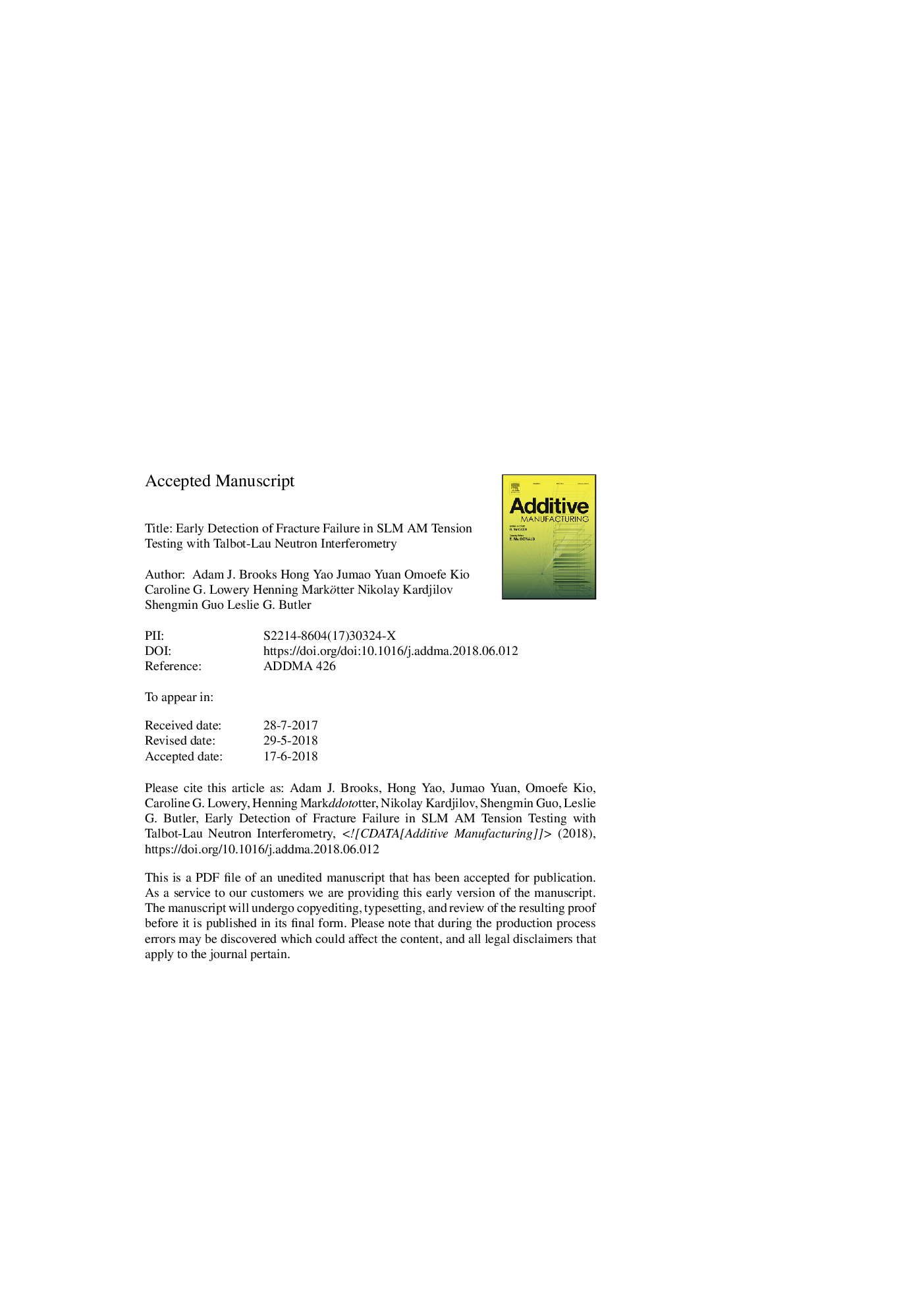| Article ID | Journal | Published Year | Pages | File Type |
|---|---|---|---|---|
| 7205800 | Additive Manufacturing | 2018 | 16 Pages |
Abstract
Tensile stress in selective laser melted (SLM) stainless steel 316 (SS316) bars was studied with neutron imaging methods for measurement of attenuation, scattering, and diffraction. The hypotheses for stress failure includes modifications to both the grain structure and residual porosity. Neutron Bragg edge imaging showed a change in crystallographic structure and/or texture at a pre-existing fracture, but did not provide evidence for presumptive crack formation. A Talbot-Lau grating-based neutron interferometer yielded better than 100â¯Î¼m spatial resolution for the attenuation images and was tuned to an autocorrelation scattering length of 1.97â¯Î¼m for the dark-field (scattering) images. The interferometry imaging was performed with samples parallel and perpendicular to the linear grating, allowing assessment of scattering along and perpendicular to the additive manufacturing build direction. In the 3D tomography dark-field volume of a tensile stressed bar, features were observed that suggested possible sites of crack formation. The features were quantified with line probes and found to be reproducible over three tomography experiments. After imaging, the half-stressed bar was pulled to failure; the fracture point is correlated with a feature in the line probe having enhanced neutron scattering. Neutron interferometry, particularly the dark-field imaging modality, emerges as a powerful non-destructive method for detecting early crack formation in additive manufactured components.
Related Topics
Physical Sciences and Engineering
Engineering
Industrial and Manufacturing Engineering
Authors
Adam J. Brooks, Hong Yao, Jumao Yuan, Omoefe Kio, Caroline G. Lowery, Henning Markötter, Nikolay Kardjilov, Shengmin Guo, Leslie G. Butler,
